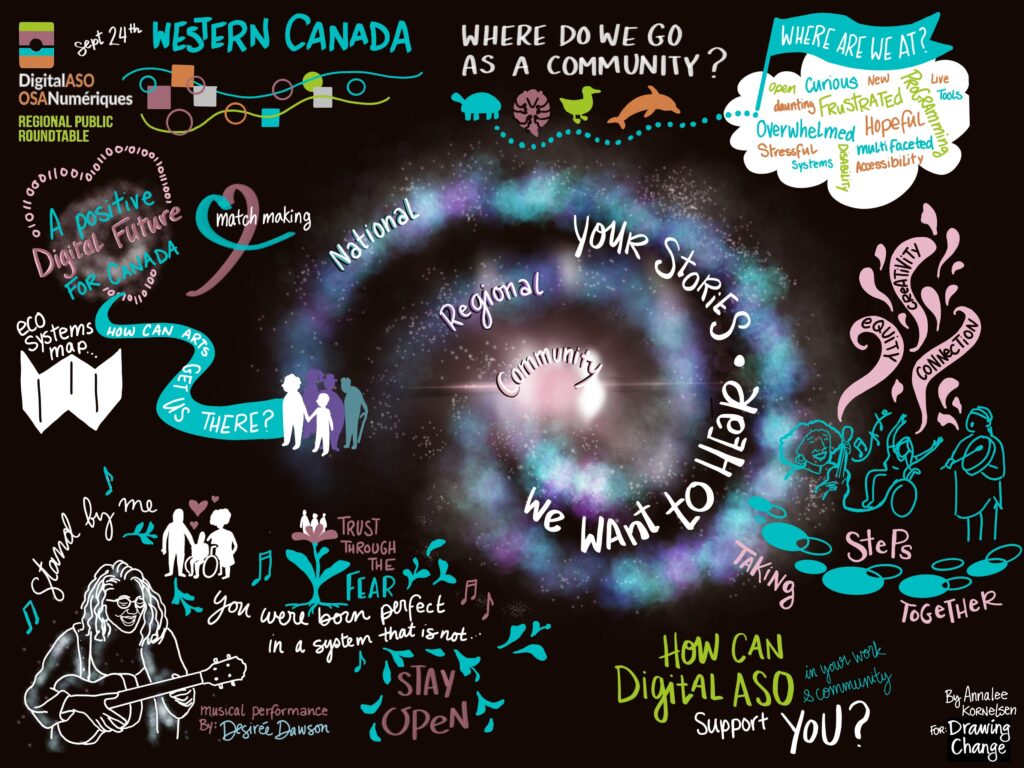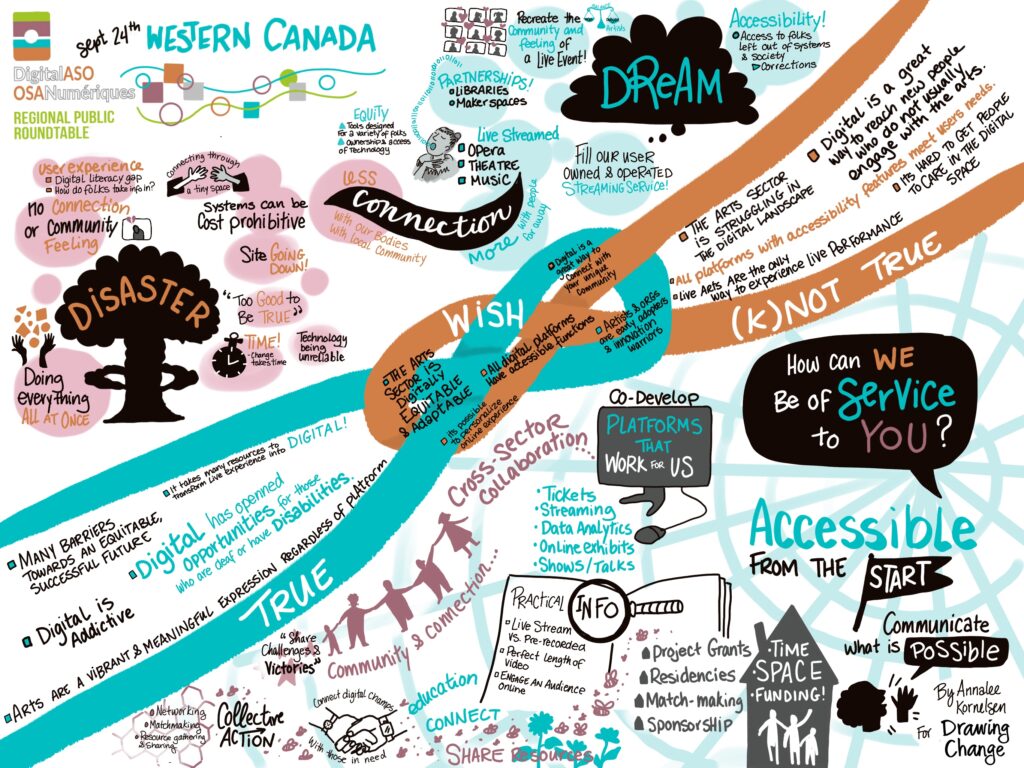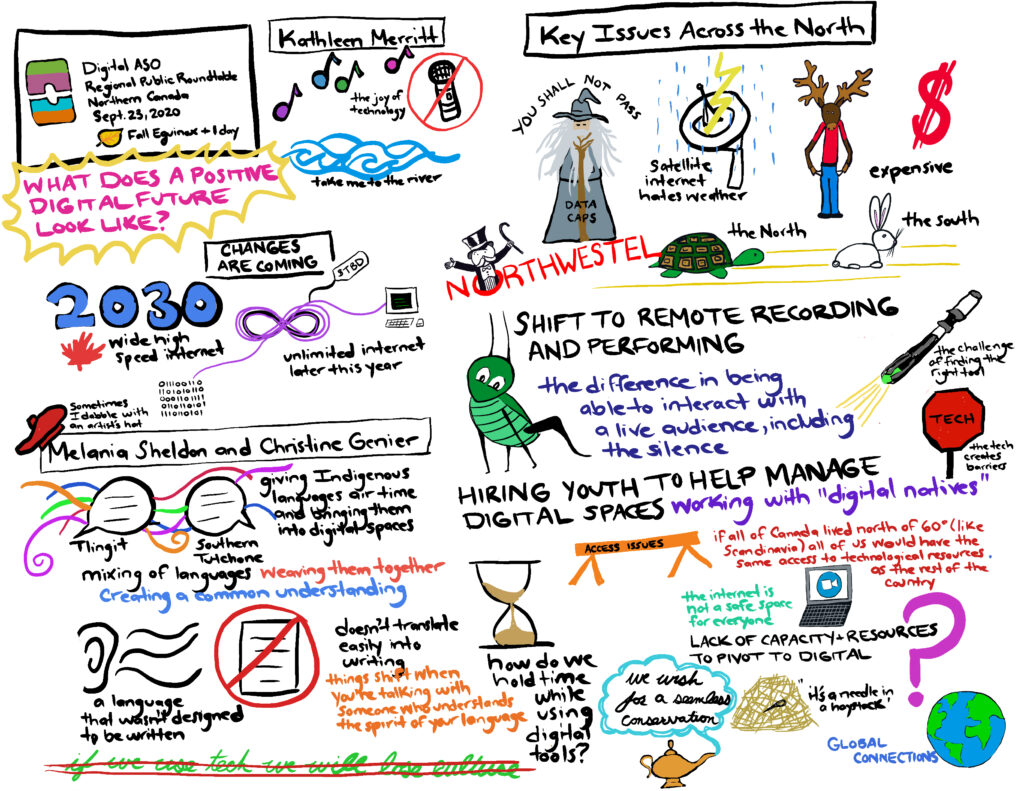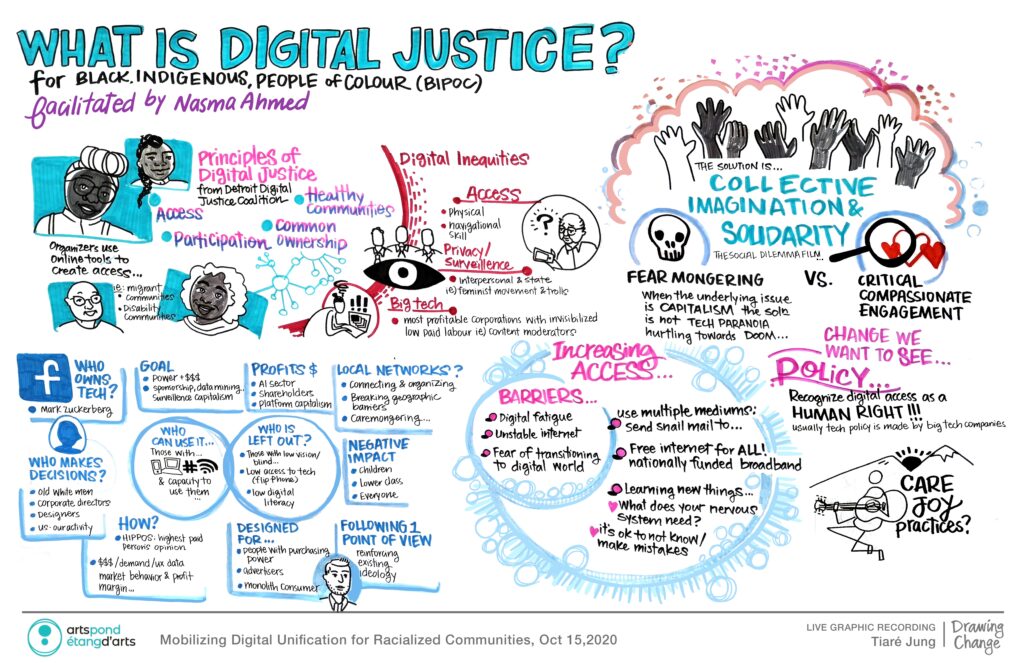In 2020, DigitalASO brought together arts and culture workers from diverse backgrounds to explore what a positive future driven by the arts might look like in Canada’s rapidly changing digital society. We heard a wide array of stories and perspectives through roundtables in Ontario, Northern and Western Canada, an Indigenous circle, and a digital justice workshop with Black and other racialized groups in arts and culture.
Over the past several months, our task has been to review these stories with the goal of better understanding the digital challenges and opportunities we face as an industry. So far, our analysis has been framed through the lens of, “how ready are we, as a sector, to reassert the role of the artist?”
This “reassertion” acknowledges that the arts have always held a role, prior to the digital age, that goes beyond just “entertainment” to a greater impact on broader society. For one, the arts are a catalyst that can spark relevant and sometimes difficult conversations. Despite this social power, artists are still faced with justifying their value in an inherently economically driven society.
Now, in a digital age, we require a new assertion of the artist; one that goes beyond, but still maintains, their traditional role. By keeping this central question, we allowed ourselves, through the analysis of our findings, to gauge what actions are required towards reasserting the artist and to consider what role the artist does play in a digital world.
At our roundtables, there was an overall eagerness to share challenges experienced and to start imagining a more positive digital future. Yet, there was great uncertainty around how to move forward together, and what common grounds and realities can unite us. A number of creative tensions emerged from region to region, but also within the individual. For example, participants expressed excitement about the abundance of opportunity created by digital technologies, while also feeling overwhelmed and at a loss for where to start or how to move forward.
In a forthcoming report, we distilled what was heard into three overarching themes:
1) Fostering bridges, cultivating trust
2) Building new practices
3) Advancing a just digital society.
To help our DigitalASO team identify priority areas for action, these themes have been further analyzed through the lenses of co-creation processes and human-centered design.
The co-creation process offers a way of looking at or identifying sector-wide solutions through an iterative cycle of problem framing, solution ideation, and validation. The human-centered design framework offers the three-pillar approach of human desirability, business viability, and tech feasibility to help foster possible solutions that will achieve our desired impact in a sustainable way. Taken together, these two practices help us navigate and respond to complex and systemic problems, all the while ensuring a solution-building process that prioritizes human needs.
Coming out of DigitalASO’s 2020 roundtables, we find ourselves with a better understanding of how the arts sector is situated in this complex problem space, and also the opportunities that we can explore together as a sector. This is the foundation upon which we have identified the change that DigitalASO can affect to impactfully and equitably support the arts in a digital world.
Looking to 2021, we are focusing our efforts on the development of an alliance, an interactive ecosystems map, and the creation of a manifesto. We will be sharing information about these initiatives in the coming weeks and announcing opportunities for stakeholders to be involved in their creation. In the meantime, below are a few selected graphic recordings from DigitalASO roundtables in 2020.
DigitalASO Western Canada Roundtable, September 24, 2020
DigitalASO Northern Canada Roundtable, September 23, 2020
DigitalASO Digital Justice Workshop, October 15, 2020




